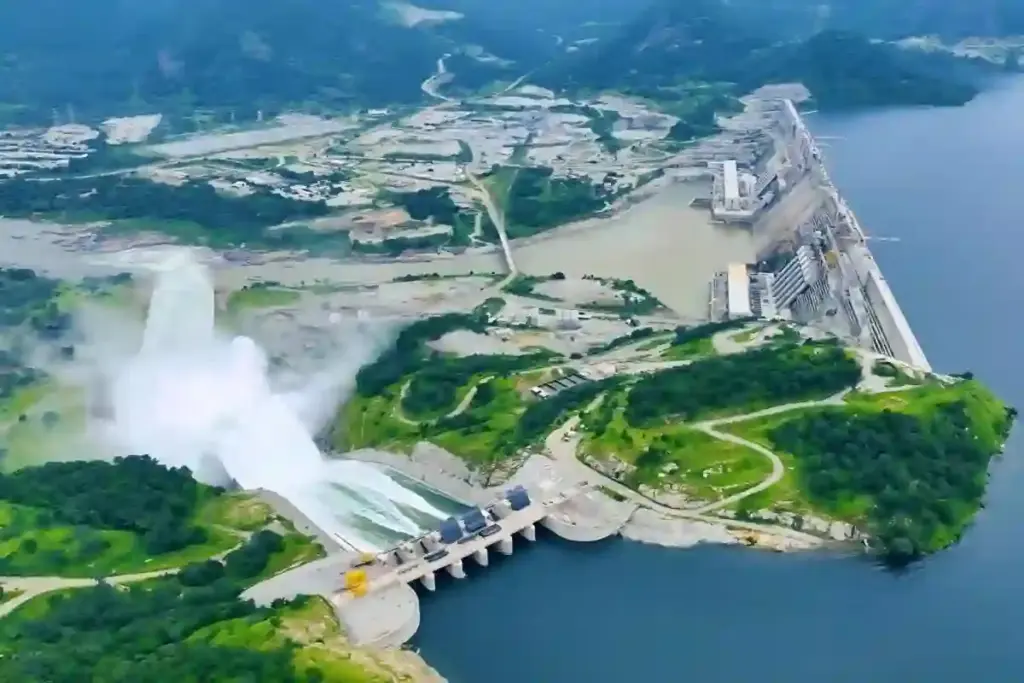After years of engineering, political debates, and international headlines, Ethiopia has now reached a defining moment in its energy ambitions.
Prime Minister Abiy Ahmed officially announced that the long-awaited Grand Ethiopian Renaissance Dam (GERD) is complete.
But while the dam stands as a powerful symbol of national progress, it also deepens a regional dispute that’s been simmering for over a decade.
Africa’s Biggest Hydroelectric Dam Is Ready
The Grand Ethiopian Renaissance Dam has been in the making since 2011, with a massive price tag of $4 billion (around R73.6 billion).
Spanning 1.8 kilometers wide and towering 145 meters high, it is now the largest hydroelectric project on the African continent.
Set to go fully operational in September 2025, the dam is expected to produce more than 5,000 megawatts of electricity—enough to transform energy access across Ethiopia.
In fact, two turbines have already been spinning since February 2022, slowly adding power to the grid.
Built Close to Sudan’s Border
Located just 30 kilometers from Sudan, in Ethiopia’s northwestern region, the dam’s strategic placement along the Blue Nile has sparked ongoing tensions with downstream neighbors—especially Sudan and Egypt.
Both countries heavily depend on Nile waters, particularly Egypt, which relies on the river for nearly 97% of its fresh water supply.
Strong Opposition from Egypt and Sudan
Despite the monumental milestone for Ethiopia, Sudan and Egypt are not celebrating.
Both nations continue to condemn what they see as unilateral action—building and now completing the GERD without a legally binding agreement in place.
Egyptian President Abdel Fattah el-Sisi and Sudan’s top leader General Abdel Fattah al-Burhan both recently spoke out again, stating clearly on June 30 that any moves on the Nile’s waters must be guided by regional legal frameworks and mutual consent.
A Decade of Talks But No Deal
The GERD has been at the center of regional diplomacy for more than ten years, with numerous attempts at brokering a deal falling short.
Egypt walked away from negotiations in December 2023, frustrated by what it called Ethiopia’s unwillingness to compromise.
Meanwhile, Sudan remains gripped by internal instability and political unrest, limiting its role in diplomatic mediation.
Ethiopia Calls for Unity, Not Fear
In his address, Prime Minister Abiy Ahmed painted a different picture.
He described the GERD not as a threat, but as a shared opportunity for all nations along the Nile.
He emphasized that Ethiopia is open to dialogue with both Egypt and Sudan and stressed the importance of working together on water and energy security.
“Collective advancement, collective energy, and collective water,” Abiy said, urging the region to prioritize cooperation over conflict.
Ethiopia argues that the dam is crucial for its economic future—especially as nearly half of its population still lives without access to electricity, according to World Bank figures.
AU and Experts Push for Renewed Dialogue
The African Union (AU) has been trying to bring all parties back to the negotiating table, but so far, no official mediation has restarted.
International observers are growing increasingly worried, warning that the absence of a binding agreement could push tensions even higher.
Ethiopia, on the other hand, maintains that it has every right to build infrastructure within its own borders without needing permission from others.
For Ethiopians, the GERD has become more than a dam—it represents national pride and a step toward energy independence.
What Comes Next Before the September Launch?
With just weeks to go before the dam becomes fully operational, the big question remains—will Ethiopia, Egypt, and Sudan be able to strike a deal before then?
Or will this energy giant continue to stir division in a region already burdened by unrest?

